Is it time to head back to Neptune and its moon Triton? It might be. After all, we have some unfinished business there.
It’s been 30 years since NASA’s Voyager 2 spacecraft flew past the gas giant and its largest moon, and that flyby posed more questions than it answered. Maybe we’ll get some answers in 2038, when the positions of Jupiter, Neptune, and Triton will be just right for a mission.
NASA is deliberating over the next mission in its Discovery Program, narrowing it down to four possibilities: a mission to study Venus’ atmosphere, one to observe volcanic activity on Jupiter’s moon Io, one to map Venus’ surface and study its geology, and one to explore Neptune’s moon Triton.
The conceptual mission to Triton is called Trident, and it’s competing with the other three to become a full-fledged mission.
“Triton has always been one of the most exciting and intriguing bodies in the solar system.”
Louise Prockter, director, Lunar and Planetary Institute
Neptune is a seldom-visited planet. In fact, only one spacecraft has ever visited. Voyager 2 flew past Neptune in 1989, and gave us some tantalizing glimpses of its strange moon, Triton.
“Triton has always been one of the most exciting and intriguing bodies in the solar system,” said Louise Prockter, director of the Lunar and Planetary Institute/Universities Space Research Association in Houston. As principal investigator, Prockter would lead the proposed Trident mission. “I’ve always loved the Voyager 2 images and their tantalizing glimpses of this bizarre, crazy moon that no one understands,” Prockter added in a press release.
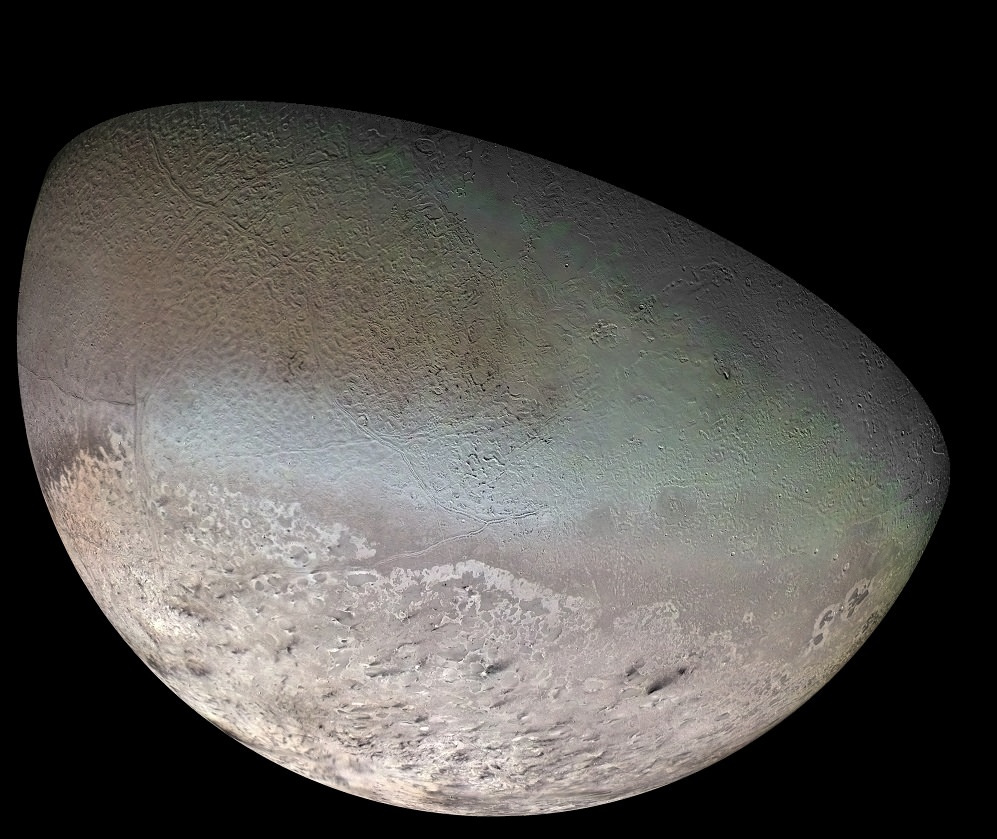
The Trident mission would launch in 2026, taking advantage of a rare and efficient alignment between Jupiter, Neptune, and Triton in 2038. It would do gravity assist fly-bys of Earth, Venus, and Jupiter before continuing on to Neptune. All of those fly-bys will help to propel the spacecraft toward its goal. Then it would perform a fly-by of Neptune, and then a fly-by of Triton. Sadly, the mission profile doesn’t include any orbiters or landers.
The spacecraft’s unique path would mean that even with only one fly-by of Triton, it would be able to almost completely map the surface of the moon. It would also be able to fly within 500 km (310 miles) of the surface, right through Triton’s thin atmosphere.
“The mission designers and navigators are so good at this,” said JPL’s William Frazier, project systems engineer of Trident. “After 13 years of flying through the solar system, we can confidently skim the upper edge of Triton’s atmosphere – which is pretty mind-boggling.”
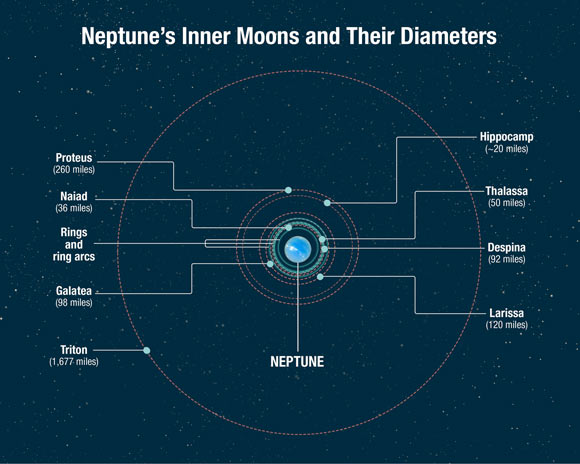
Triton has a handful of strange characteristics that beg for explanations.
When Voyager 2 went past Triton in 1989 it spotted a few things that fired up our curiosity. There were eruptions of nitrogen gas and dust reaching up to 8 km (5 miles) high. Only a few impact craters were visible, and the surface had been resurfaced over and over. There were ridges, furrows, outcrops, plains and plateaus, but no surface variations of over 1 km.
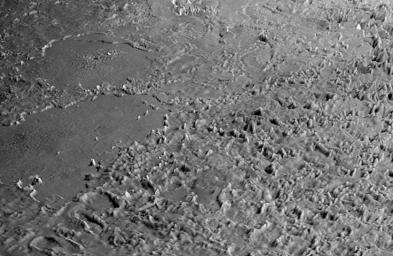
“Triton is weird, but yet relevantly weird, because of the science we can do there,” said Karl Mitchell Trident project scientist at JPL. “We know the surface has all these features we’ve never seen before, which motivates us to want to know ‘How does this world work?'”
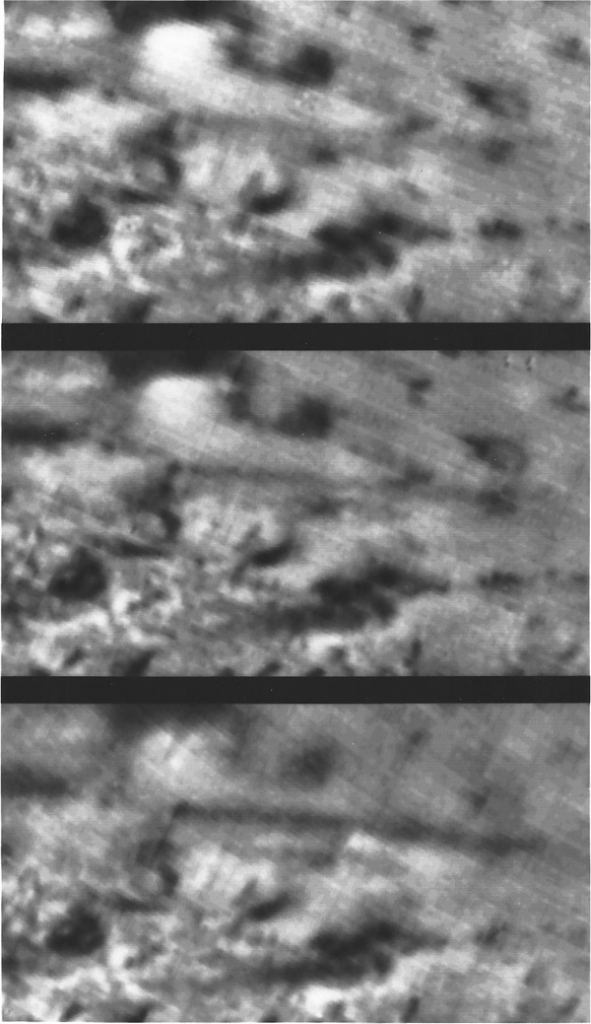
Scientists have pieced together the interior of Triton, too, though there’s lots that requires confirmation, and lots they still don’t know. It’s likely a differentiated body, meaning it has a crust, a mantle, and a core. But the mantle is probably liquid water, and there’s likely enough radioactive material in Triton’s core to keep that water warm. There’s evidence to support all this, but a mission would clarify some of it, and hopefully answer some other questions.
There’s more strangeness when it comes to Triton. It’s in a retro-grade orbit with Neptune, meaning it orbits in the opposite direction of Neptune’s rotation. It’s the only large moon in the Solar System to do so. The only explanation for its counter-rotation is that it’s a captured Kuiper Belt Object, rather than an in-situ moon. It’s also heavily tilted in relation to Neptune, offset by 23 degrees.
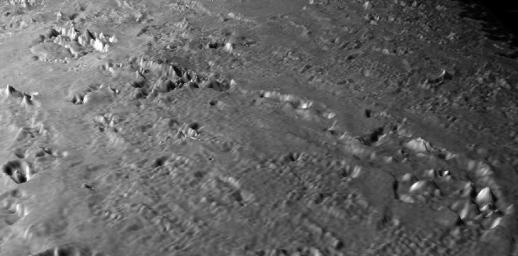
And then there’s the atmosphere. Triton has a very thin nitrogen atmosphere, with only trace amounts of carbon monoxide and methane. Scientists think that the atmosphere comes from nitrogen ice melting from the surface, which is covered in a thin layer of annealed frozen nitrogen. And the moon’s ionosphere is filled with charged particles, and is 10 times more active than any other moon.
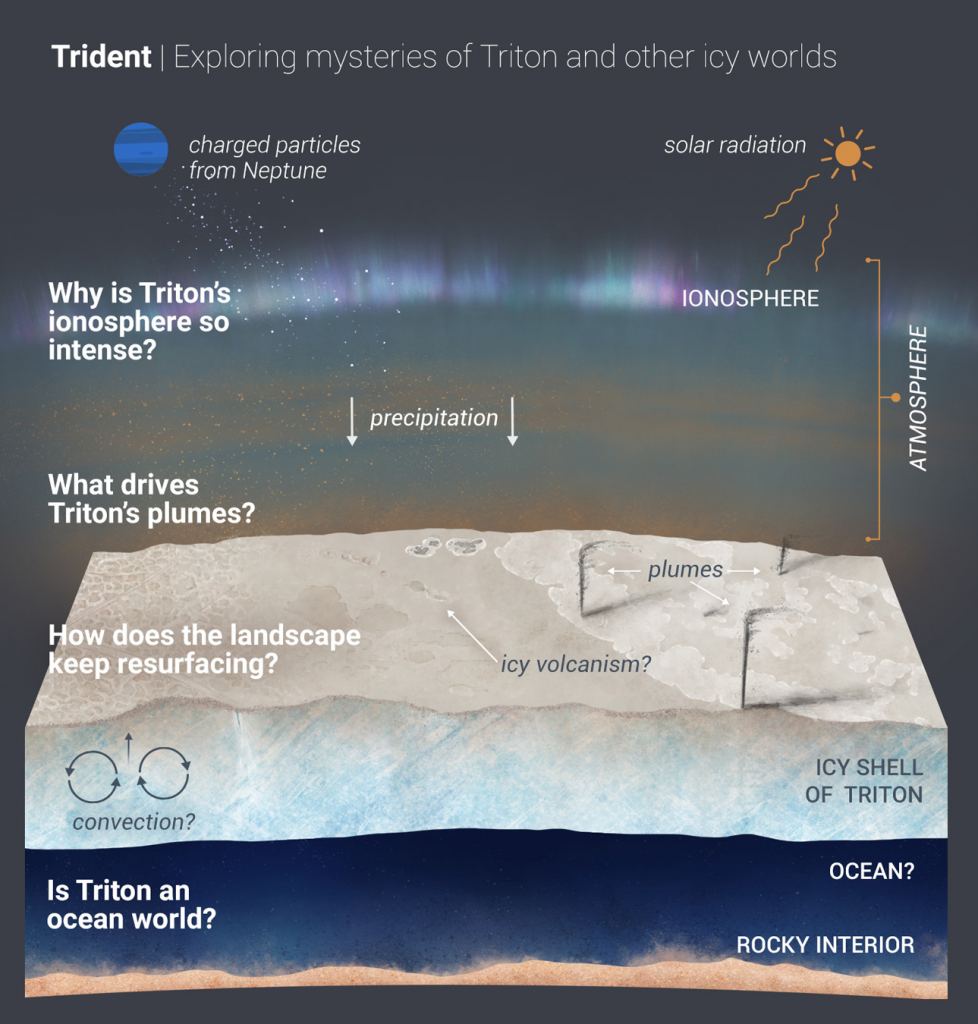
The active ionosphere is one of Triton’s most mysterious qualities. Normally, that activity is driven by the Sun. But Triton is so far away from the Sun—30 times further away than Earth is—that something else must be driving all that activity.
The problem is, we know all of this from Voyager 2’s single fly-by, from a distance of 40,000 km (25,000 miles) from Triton. We need a closer look to learn more about this strange, captured moon.
In their work, NASA has identified a number of top-level, priority questions that guide their mission selections. These are some of the questions prioritized by NASA’s Outer Planets Assessment Group:
- What is the distribution and history of life in the solar system?
- What is the origin, evolution, and structure of planetary systems?
- What present-day processes shape planetary systems, and how do these processes create diverse outcomes within and across different worlds?
One major thrust of all this exploratory desire is centered around water, and Triton’s potential liquid water mantle.
NASA’s Outer Planets Assessment Group has a specific set of questions dealing with water, ocean worlds, and the role they play:
- What controls the habitability of ocean worlds?
- Do ocean worlds hold life now, or did they in the past?
- What role did the giant planets play in the emergence of life on Earth or elsewhere in the solar system?
There are other suspected ocean moons in the Solar System, like Europa, Ganymede, and Enceladus. But Triton is much further from the Sun than those other moons, and unlike those moons, Triton’s sub-surface ocean likely developed after Neptune captured it. How did that process did play out?

“As we said to NASA in our mission proposal, Triton isn’t just a key to solar system science – it’s a whole keyring: a captured Kuiper Belt object that evolved, a potential ocean world with active plumes, an energetic ionosphere and a young, unique surface,” said Trident project scientist Karl Mitchell.
The Trident mission can’t answer all those questions at once. But it can pick away at them. The instruments that make up the scientific payload will be selected to advance our understanding of Triton on a few fronts, not just the water aspect.
In Trident’s case, the current concept calls for cameras, two spectrometers, a magnetometer, and a radio science experiment. An infrared spectrometer would map the surface, a plasma spectrometer would investigate the atmosphere, especially Triton’s active ionosphere, and the magnetometer would detect any sub-surface ocean.
Trident would use its full-frame imaging camera to capture the same plumes that Voyager 2 imaged, but in full “Neptune-shine,” when the Sun’s reflected light will light up Triton’s dark side. Scientists can observe changes since the last visit and learn more about just how active Triton is.
There’ve been many proposed missions to Neptune and Triton over the years. Including Uranus and its moons, the pair of ice giants and their satellites represents the only class of planet we haven’t explored in our Solar System. And exploring them won’t only answer questions about our own system. The most common type of exoplanet detected so far are Neptune-like planets. So whatever we learn about Triton, some of it will extend to our understanding of exoplanets.
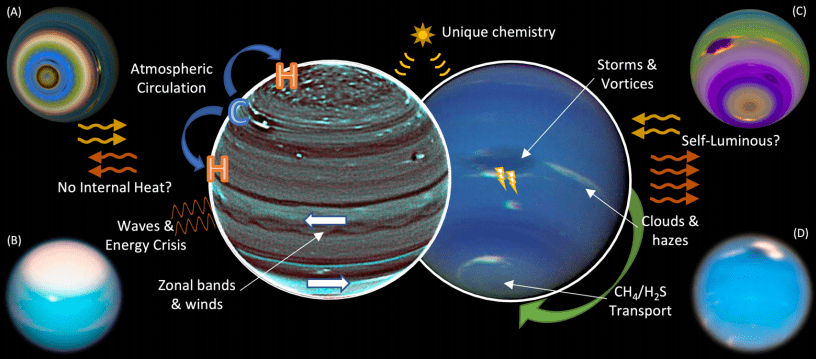
The Triton mission is only a concept at this point. And it’s competing with three other missions for selection. By summer 2021, NASA will have narrowed the choice down to two finalists, or possibly one winner.
Triton’s unusual properties have a lot to teach us about the evolution of the Solar System, about water, habitability, and the potential for life in the outer Solar System, far from the Sun. From our great distance, we’re forced to guess and wonder about this strange moon, and to shuffle and re-shuffle our few, tantalizing images of it.
But we want more answers. And the only way to get real answers, is to go.
More:
- Press Release: Proposed NASA Mission Would Visit Neptune’s Curious Moon Triton
- Press Release: NASA Selects Four Possible Missions to Study the Secrets of the Solar System
- Universe Today: Neptune’s Moon Triton
- NASA Outer Planets Assessment Group: EXPLORATION STRATEGY FOR THE OUTER PLANETS 2023-2032: Goals and Priorities

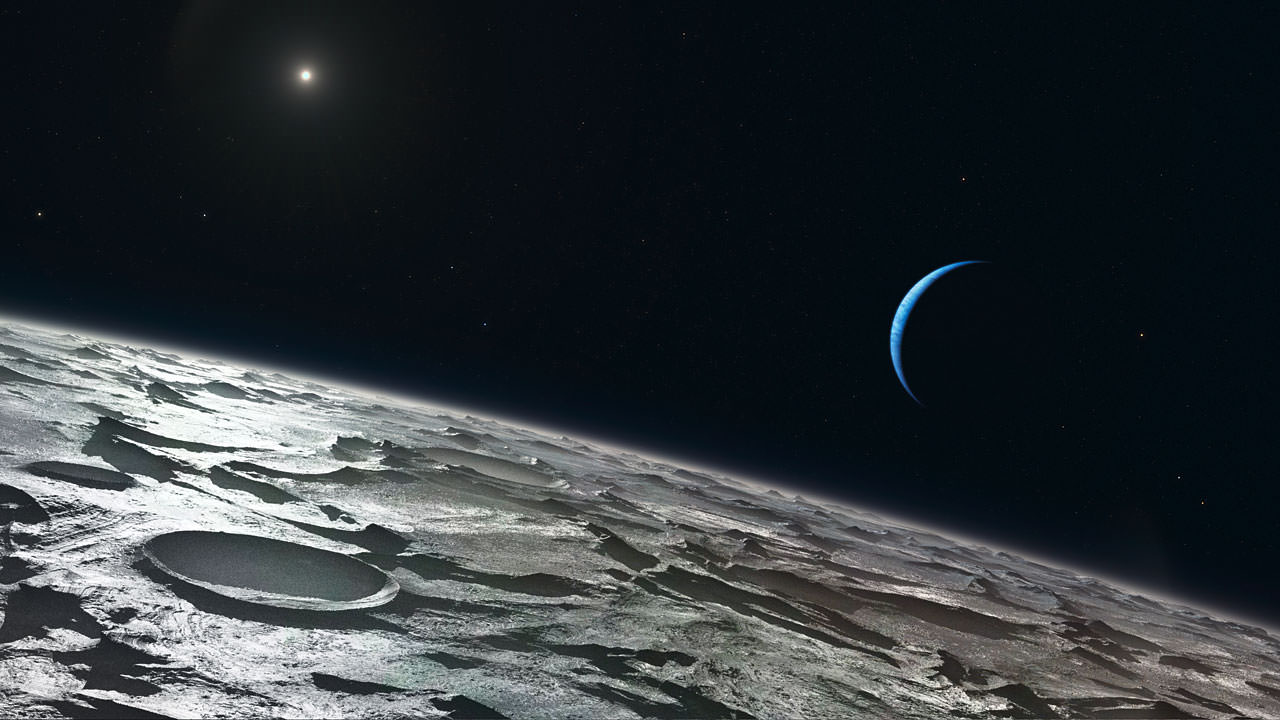
So sad when I heard as the word, “Trident” I first think that submarine launch MIRVing missile built to make the rubble bounce in World War IV instead of the staff of the mighty god of the sea.